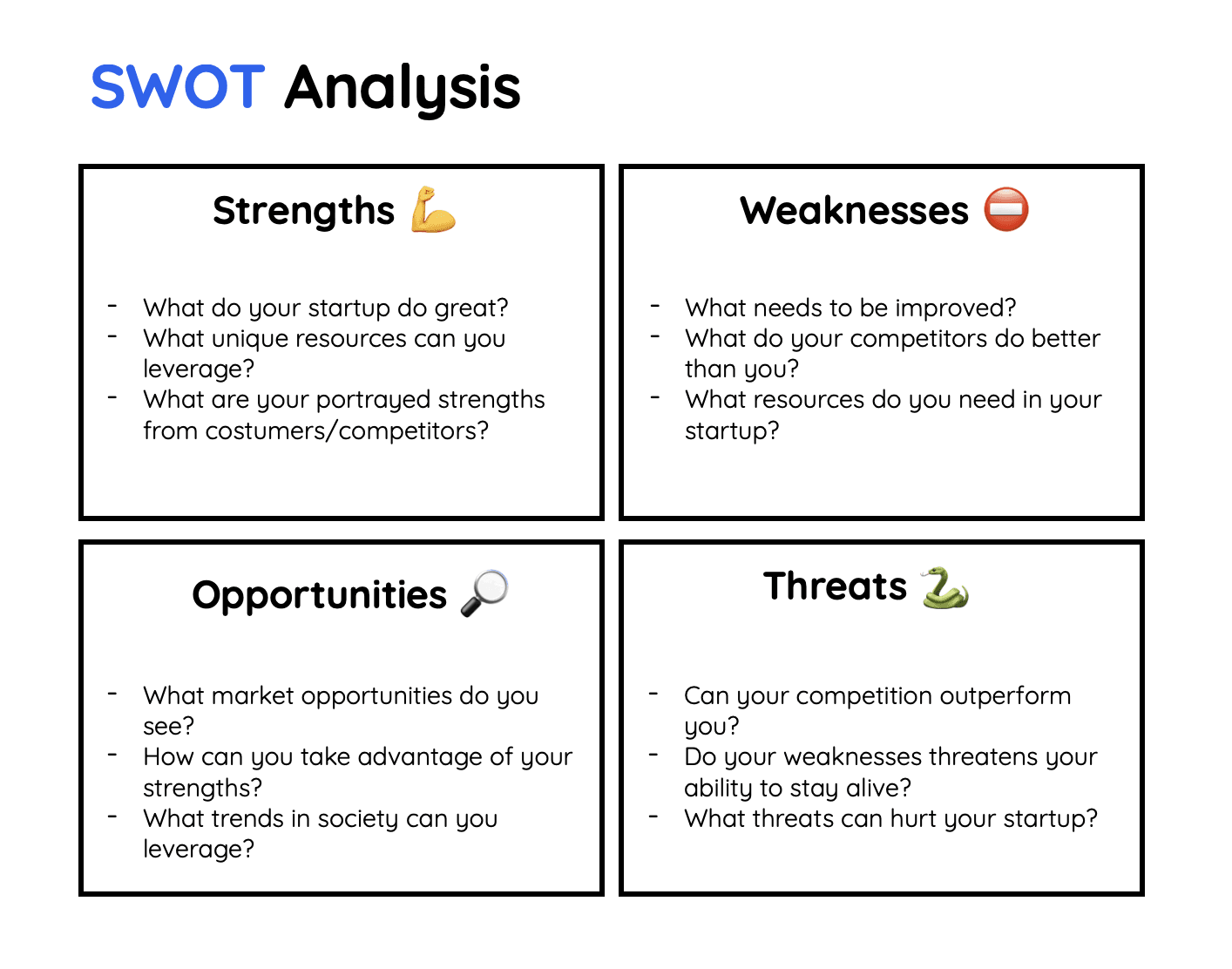Table of Contents
Starting a business is one of the most important and rewarding decisions you can make. It’s an opportunity to turn your hobbies, passions, or skills into a profitable enterprise providing financial stability, personal fulfillment, and freedom.
However, starting a business can be intimidating and overwhelming if you don’t know where to begin. That’s why learning how to start a business is crucial.
In this article, we’ll guide you through the essential steps on how to start a business successfully. From identifying your target market to expansion, we’ll cover everything you need to know to confidently launch your business.
Define your business idea
1. Identify your passion and interests
Defining your idea is one of the first steps in how to start a business. The best way to do this is by identifying your passions and interests. Your passion will drive you to work harder, persevere through tough times, and ultimately make your business successful.
To identify your passion, start by making a list of things that interest you. Think about what hobbies or activities excite you, what problems you would like to solve, or what products or services you would like to offer. Once you have a list, narrow it down by considering market demand and profitability factors.
Your passion doesn’t necessarily have to be something completely unique or groundbreaking; it just needs to be something that motivates you and sets your business apart from competitors.

First step in how start a business is to define your passion and interest
2. Conduct market research to validate your idea
Once you have identified your passion and interests, the next step in how to start a business is to research the market demand for that particular niche. Is there an existing need for this type of product or service?
Conducting market research can help you validate your idea by providing insights into consumer behavior, industry trends, and competitors. There are two main market research types: primary and secondary.
2.1. Primary Research
Primary research involves gathering data directly from potential customers or target markets. This can be done through surveys, interviews, focus groups, or observation. Doing so gives insight into how people feel about your product or service and their needs and preferences.
For example, if you plan on opening a coffee shop in a busy downtown area, you could conduct primary research by talking to pedestrians in the neighborhood about their coffee habits and preferences. You could ask questions like “How often do you drink coffee?” or “What do you look for in a good cup of coffee?” to understand the local’s real drinking reference.
One common mistake many entrepreneurs make is surveying friends and family members who may not necessarily represent their target market. While it may seem easy, relying on biased opinions can lead you down the wrong path and potentially cost you time and money in the long run.

How to start a business: Primary research helps you quick gain insights into the market
2.2. Secondary Research
Secondary research involves analyzing existing data that has already been collected by others. You can leverage this data to understand how similar businesses have fared in the past and what strategies they employed to succeed or fail.
However, it is important to note that the downside of this method is that the information may not be as up-to-date as primary research.
To conduct secondary research for your business idea, identify reliable sources such as industry publications, government reports, academic journals, or case studies. Read through them thoroughly and take notes on important findings that relate directly to your business idea.
For example, let’s say you plan to open a coffee shop in a neighborhood. You could start by researching the coffee industry trends in that area using local newspapers or online publications focused on small businesses or cafes. Then, with the materials you have collected, you can start analyzing special trends or preferences in the market to tailor your business idea.

How to start a business: Conduct market research helps you get an overview of the current market
2.3. SWOT Analysis
Once you’ve completed your research, it’s time to perform a SWOT analysis. This step will help you validate your business idea by identifying its strengths, weaknesses, opportunities, and threats.
By doing so, you can develop strategies that capitalize on your strengths and opportunities while minimizing the impact of weaknesses and threats.
To get started with a SWOT analysis, begin by listing all of your business’s internal strengths and weaknesses. Things like unique products or services you offer and potential operational inefficiencies. Then consider external factors such as competitors or shifts in consumer behavior for potential opportunities or threats.

How to start a business: Example how you analyze SWOT for your business idea
3. Determine your unique selling proposition (USP)
Your business idea should identify what sets you apart by developing a unique selling proposition (USP). A USP sets your company apart from competitors and gives customers a reason to choose you over others.
To determine your USP, start by researching similar businesses in your industry. What do they offer? How do they market their products or services? Then consider what makes your business different. Is it the quality of your products or services? Your exceptional customer service? Maybe it’s as simple as being the only provider in a specific geographic area.

How to start a business: USP is essential to a business
Plan and prepare
1. Create a business plan
A business plan will help you organize and clarify your vision for your company’s future. It will also serve as a roadmap to guide you through starting and growing your business. Creating a business plan is a very important task on how to start a business.
When writing a business plan, below are the sections that you should include for it to be well-rounded:
- Executive summary: The executive summary should be the first item in the plan. It provides a brief overview of your business idea, target market, financial projections, and key objectives.
- Company description: Here is where you should delve deeper into who you are as a company. This section includes information about how long you’ve been in operation (if applicable) and any notable achievements or awards received so far.
- Market analysis: This section will dive deep into your target audience, their needs, and how you can fulfill them better than anyone else. You’ll want to gather and analyze data on industry trends, competitor insights, and customer feedback to create an accurate picture of the market landscape.
- Organization and structure: This section outlines how your company will operate from top to bottom – including its legal structure, management hierarchy, staffing requirements, and operational processes.
- Mission and goals: This section should explain what your company does and why it exists. It should also detail the specific goals you hope to achieve through your business activities.
- Products or services: This section should describe what your company offers and how it solves customers’ problems or fulfills their needs. It should also include information on any unique features that set your products or services apart from those of your competitors.
- Background summary: This section of the business plan takes the most time. Gather and compile any data, articles, and research studies on trends that may positively and negatively affect your business or industry.
- Marketing plan: This section describes your value proposition, examines the SWOT, and analyzes your service area’s competition. It discusses how you will market your business, how much money will be spent on marketing, and how long your campaign will last.
- Financial plan: This is the crucial element of your business plan. This portion details the financial projections that show how much money you will need to start and run your new venture successfully.

How to start a business: Business plan preparation is another important task
2. Determine the legal structure of your business
Your business’s legal structure will significantly impact how it operates, how much taxes you pay, and the level of liability protection it offers.
There are several types of legal structures for small businesses, including sole proprietorships, partnerships, limited liability companies (LLCs), corporations, and cooperatives. Each type has unique advantages and disadvantages that are worth considering before making a final decision.
For example, a sole proprietorship is easy to set up and maintain, but you’ll be personally liable for any debts or liabilities incurred by the business. On the other hand, forming an LLC or corporation can provide more protection for your personal assets.
Before deciding on which legal entity to choose for your business, it’s essential to consult with a lawyer or tax professional who can give you more information about each option.

How to start a business: Legal structure is important to define the roles of members in your business
3. Register your business and obtain the necessary licenses and permits
Once you have decided on the type of entity that works best for you, you need to plan and prepare well to ensure that your business is legal and compliant with all necessary regulations. This means registering your business and obtaining the required licenses and permits.
Here’s what you need to know about this process:
- First, you’ll need to determine which level of government handles business registration in your location. This could be at the federal, state, or local level, depending on where you’re located.
- Once you’ve identified where to register your business, you’ll need to choose a name for your company that meets all legal requirements. This may include ensuring that it’s not already in use by another business or trademarked by someone else.
- Next, register your business name. This will ensure that no one else can use it in their own business ventures. In addition, you may need to apply for a tax ID number from the IRS, which will allow you to pay taxes on any income earned by your company.
- Finally, you should research the types of licenses and permits needed for your particular industry in your locality. This can vary depending on the nature of your business, so it’s important to do your due diligence.

How to start a business: Licenses and permits are essential in how to start a business
4. Secure funding for your business
Funding is the next important step in how to start a business. This can come from both internal and external sources.
?Internal funding includes:
- Personal savings or investments
- Loans from family and friends
- Credit cards
For example, let’s say you want to start a bakery. You’ve saved up $10,000 over the years and are willing to invest it into your business. Additionally, your cousin has expressed interest in investing $5,000 into the bakery as well. This is considered internal funding since the money is coming from within the circle of people close to you.
| ?Important note: One downside of internal funding is that it may hurt your personal finances if your business does not succeed. If you use your own savings, use credit cards, or borrow money from family and friends, you may lose these funds if your business does not generate enough revenue to pay back the loan. That’s why many entrepreneurs consider external funding. |
?External funding includes:
- Small business grants offered by the government/ private organizations
- Bank loans for small business
- Crowdfunding
- Venture capital
- Angel investors
One example of external funding is getting investments from venture capitalists or angel investors. These types of investors are typically wealthy individuals or firms that provide capital in exchange for equity in your company.
| ?Important note: There is a downside to seeking investment from external sources. One major drawback is that you will have less control over your company’s decision-making process since your investor(s) now have ownership shares in the business. |

How to start a business: Businesses cannot start without money
Set up your business
1. Choose a business name and register your domain name
Your business name will become your brand identity, so choosing something that reflects your values and mission is essential. Make sure to conduct research to ensure that the name you choose isn’t already in use or trademarked by another company.
Once you’ve settled on a business name, it’s time to register your domain name. A domain name is crucial because it’s how people find and access your website online.
Shopify makes this process easy with its user-friendly platform, which includes a domain registration service. You can check if your desired domain is available and purchase it directly through Shopify.
2. Set up your business location or office
#1. Choose locations with good traffics
When setting up your business location, you should understand your customer base and identify the perfect spot to reach them. Whether you are an online-based business or a physical store, visibility is crucial for attracting customers.
- For brick-and-mortar stores, it’s essential to consider factors such as traffic flow, accessibility, and proximity to competitors. Choosing a good physical location and decorating your store beautifully is key.
- For online-based businesses, ensure your website is optimized for search engines and user-friendly enough for customers to navigate easily. You do not have to invest in fancy physical locations or decorations.
#2. Make sure the office is suitable for working comfortably
You should consider the size of your space and the number of employees you have. You want to ensure enough room for everyone to work comfortably without feeling cramped or overcrowded.
It’s also important to think about the layout of the space, including factors such as lighting, noise levels, and traffic flow. Also, you should invest in quality functional, and comfortable furniture.

How to start a business: Set up your business location or office is another essential step to start your business
3. Set up your business operations, including hiring employees and managing finances
The next important step in how to start a business is setting up your business operations. This includes hiring employees and managing finances.
When it comes to hiring employees, it’s important to understand your needs and have a clear job description for each role. You should also consider the employment cost, including salaries and benefits packages. Other important factors to consider include legal requirements such as work visas or background checks.
Managing finances is another crucial aspect of setting up your business operations. You’ll need to create a budget and determine how much capital you’ll need to get started. You should also choose an accounting system that works for your business needs, whether that’s a simple spreadsheet or more advanced software solutions like TrueProfit.

How to start a business: Setting business operations are stepping stones to make your business idea an reality
Launch your business
1. Develop a marketing plan & Launch your website and Social account
If you’re wondering how to start a business successfully, developing a solid marketing plan should be at the top of your list. Why is this essential? Well, simply put, without a marketing plan in place, how will anyone know about your business?
#1. Create a website
Even if you’re running a brick-and-mortar business, an online presence is a must. Creating a nice website that includes basic information such as an “About” web page, your location, and working hours would help customers get information about your store more easily.
And if you run an online store, then it is no doubt that website creation is a must for your business. You can use an eCommerce platform like Shopify to start your online business.
Shopify is one of the leading e-commerce platforms on the market today, offering user-friendly tools and resources for entrepreneurs to create and manage their own online stores. With its easy-to-use interface, customizable templates, and seamless payment processing options, Shopify is an excellent choice for anyone looking to launch their own website.
#2. Optimize SEO for your site
After you have a website or an e-commerce store, focus on optimizing SEO. This way, whenever a customer searches for specific keywords for your products, the search engine will then direct them to your site.
SEO is a long-term strategy, so do not expect a lot of traffic from search engines right away, even if you’re using all the right keywords.
#3. Create relevant content
Creating relevant content for your target audience can help you establish brand awareness, boost engagement, and ultimately drive sales.
#4. Get your business listed in online directories
Customers utilize online directories like Yelp, Google My Business, and Facebook to find local businesses. Some city halls and chambers of commerce also have local business directories. Therefore, add your business to as many relevant directories as possible. You can also use certain business directories to ensure that your business information is up to date.
#5. Develop your social media strategy
Developing a comprehensive marketing plan is essential for any new business owner, and social media should be at the forefront of that plan. With over three billion active users worldwide, social media platforms like Facebook, Instagram, and TikTok have become powerful tools for businesses to connect with their target audience.
You can also publish blog content that appeals to your target audience. Use social media to drive traffic to your website, where customers can learn more about your offerings and buy your products.
You don’t need to be on every social media platform available, but you should have a professional online presence on at least 1-2 platforms that your audience is on.
2. Create a launch event or promotion to generate buzz and attract customers
To create a successful launch event or promotion, set clear goals aligning with your business objectives. Decide what you want to achieve from this event or promotion. Do you want to generate leads? Increase sales? Boost brand awareness?
Once you have identified your goals, tailor your messaging and content accordingly. Consider partnering with influencers with large followings on TikTok or other social media platforms to help spread the word about your event or promotion.

How to start a business: Launch event or promotion helps generate buzz and attract customers
Manage and grow your business
1. Continuously monitor and adjust your business operations and marketing strategies
Once you’ve launched your company, you must ensure that it continues growing and developing over time. Monitoring is an important step in how to start your business.
One way to do this is by analyzing your sales data regularly. Look for trends in customer behavior, such as which products or services are selling best, and adjust your inventory or offerings accordingly.
You can use profit analytic tools like TrueProfit to do this more easily. This powerful tool is designed to track your business’s key performance metrics. With TrueProfit, you can easily see how your business is performing regarding revenue, profit margins, AOV, and more. This information helps you make data-driven decisions that improve your bottom line.
Another key aspect of managing and growing a successful business is staying up-to-date with industry trends and monitoring what competitors are doing. Attend industry events, read trade publications, and keep tabs on what similar businesses in your area are offering.
| ?You might also be interested in: Average Order Value (AOV) | Definition, Formula & Calculator |

How to start a business: Monitor your business performance to make sure your plan goes well
2. Build relationships with customers and suppliers
You need to find ways of building solid relationships with your customers and suppliers. As much as you may have exceptional products or services, it’s impossible to succeed without loyal customers who keep coming back. Similarly, finding reliable suppliers who consistently meet your needs is crucial if you want to grow your business.
Building relationships with both groups requires time and effort. It starts with understanding their needs and expectations, offering excellent customer service, delivering on promises, being transparent in all dealings, and going above and beyond for them when possible.
For instance, consider offering personalized experiences that make customers feel valued or paying fair prices promptly to build trust with your suppliers. When done right, these gestures can win over even the most skeptical customers and partners.

How to start a business: Good relationship with customers and suppliers are essential
3. Expand your business by diversifying your products or services, entering new markets, or acquiring other businesses
It’s now time to think about growth and expansion. One way to achieve this is by diversifying your products or services. This means offering more than what you initially started with, expanding your product range or service offerings to cater to different consumer needs.
Another way to grow your business is by entering new markets. You can explore new territories, target different demographics or focus on niche markets that are currently underserved.
Finally, acquiring other businesses can also help grow your own. By buying out companies that offer complementary products or services, you can leverage their existing customer base while expanding yours at the same time.

How to start a business: Expansion is essential when you want to scale up your new business
Final words
Learning how to start a business is a challenging feat. It requires hard work, dedication, and plenty of risk-taking. However, if you believe in your vision and are passionate about seeing it through, there is no limit to what you can achieve as an entrepreneur.
Don’t be afraid to plunge and turn your dreams into reality. Take the steps outlined in this article, and you’ll be on the right path to success in your business venture!



